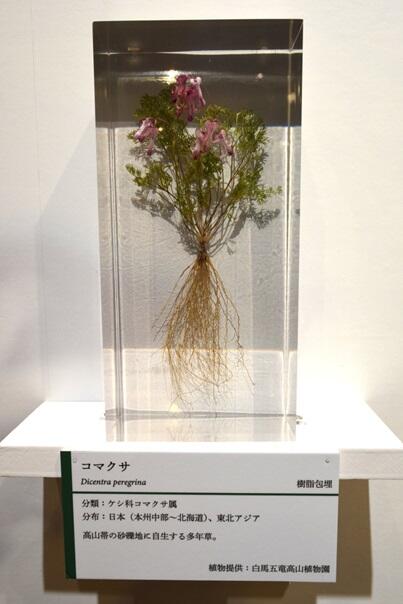The National Museum of Nature and Science (Ueno Park, Taito City, Tokyo Prefecture; President: Kenichi Shinoda) is holding the special exhibition "Alpine Plants—The Diversity and Ecosystems of Flowers Beyond Reach" on the first floor of the Japan Gallery until November 4. The exhibition introduces the diverse morphology and ecology of alpine plants, their interactions with other organisms, the critical situation surrounding them, and related research and conservation activities using video footage and beautiful resin-embedded specimens. Only the admission fee for the permanent exhibitions is required for this special exhibition. The admission ticket price is 630 yen for adults and university students and free for high school students and younger and those aged 65 years and older.

Provided by the National Museum of Nature and Science
Senior Curator Yoshinori Murai (Division of Plant Diversity and Conservation, Department of Plant Research, National Museum of Nature and Science) said, "I hope that people will think about the future of alpine plants while learning about their diversity and relationships with various organisms."
Alpine plant is a generic term referring to all plants found in alpine and subalpine zones, and diverse species are found in Japan. There are 440 species and more than 750 varieties. These plants are believed to have migrated from northern cold-climate regions during glacial and interglacial periods when Japan was contiguous to the continent, remaining in the high mountains as temperatures rose. Therefore, some species are nearly identical between Japan and the Arctic, while others have undergone species differentiation, becoming endemic to Japan. The rich diversity of the alpine plants reflects geological differences among high mountains, although they were contiguous, and adaptation to the harsh environment.
This special exhibition focuses on alpine plants in Japan and introduces their attractiveness and current situation using resin-embedded specimens, videos, and panels. Endangered species is also a keyword. Alpine plants are generally small in size to adapt to harsh environments. Many of them feature beautiful flowers, and their size is large relative to the size of the plant. In the past, illegal digging has reduced their numbers. Despite restrictions on mountain entry and other conservation measures, they are still illegally harvested. Moreover, many species are endangered due to environmental changes from global warming and damage from deer feeding.
The exhibition also introduces the conservation activities being undertaken by Murai and the Ministry of the Environment. Research on alpine plants began in the Meiji and Taisho Eras and has recently advanced with component analysis and genetic analysis. The exhibition also introduces recent research trends, including joint research with overseas institutions. Some of the plants on display can be seen in their actual form at the Tsukuba Botanical Garden, where cultivation techniques are being developed as part of conservation efforts. The method of cultivation is unknown for many species.
The museum is closed on Mondays (or Tuesdays in the case of a public holiday). However, the museum is open on October 7.
This article has been translated by JST with permission from The Science News Ltd. (https://sci-news.co.jp/). Unauthorized reproduction of the article and photographs is prohibited.




